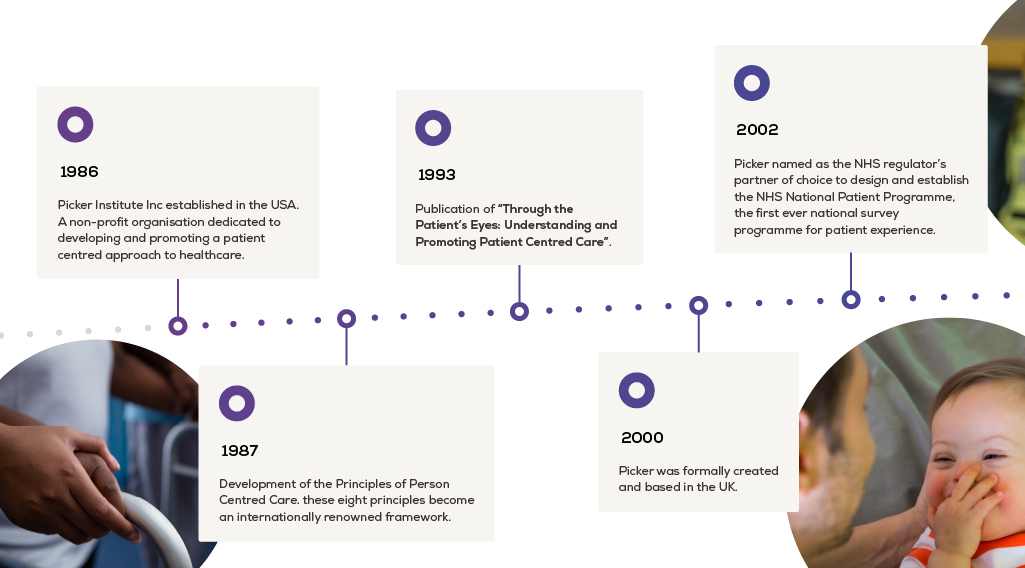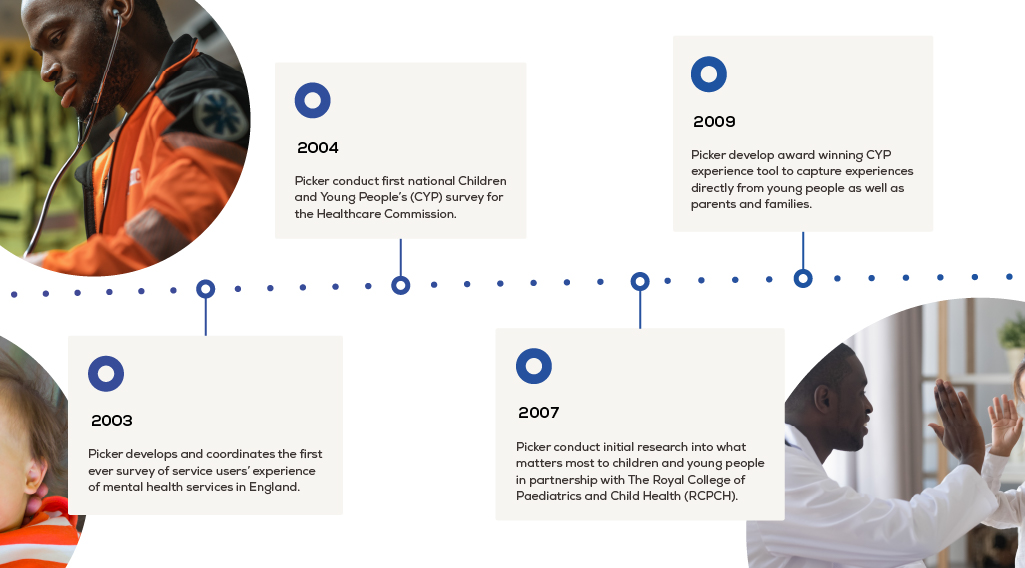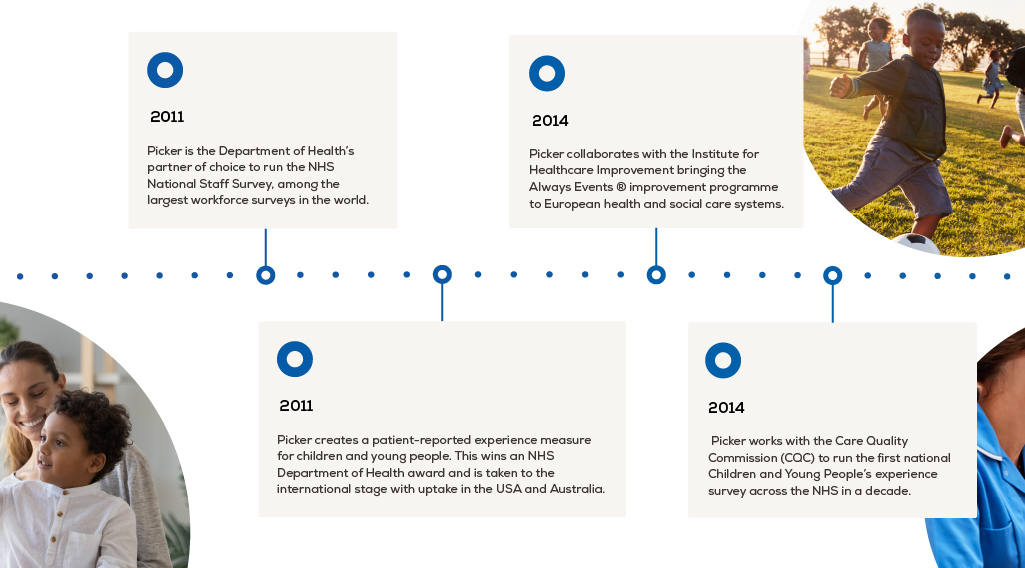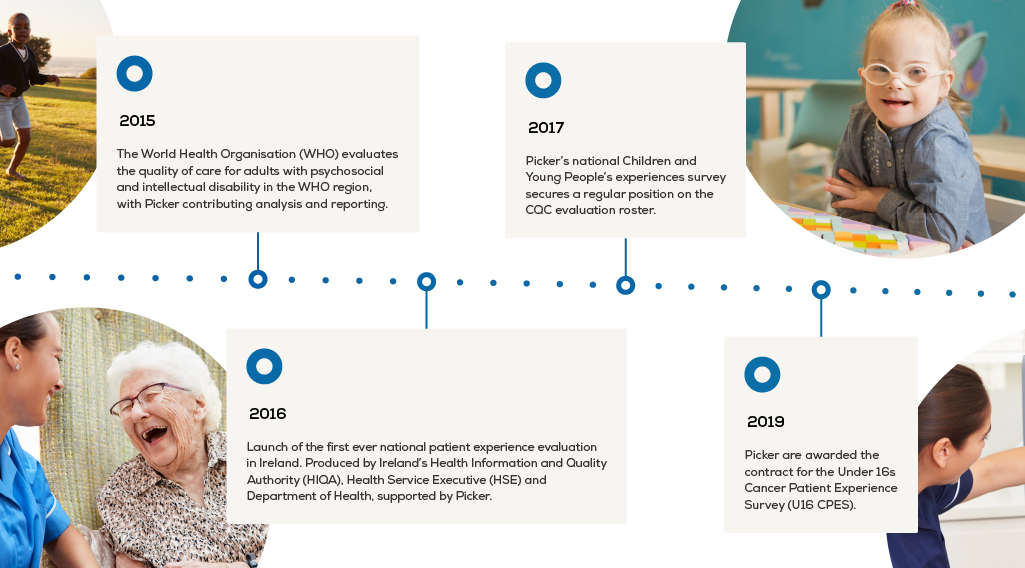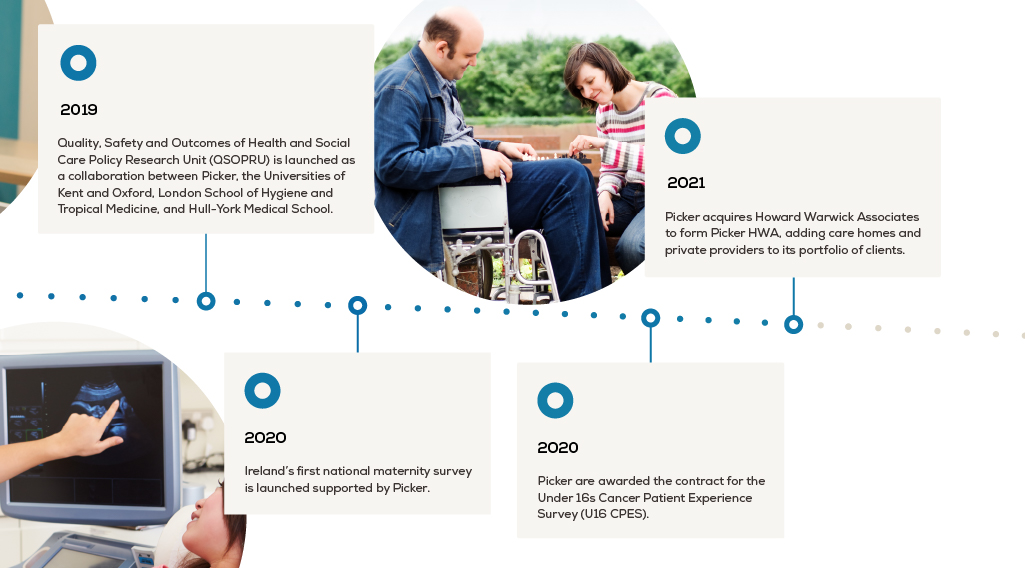Our history
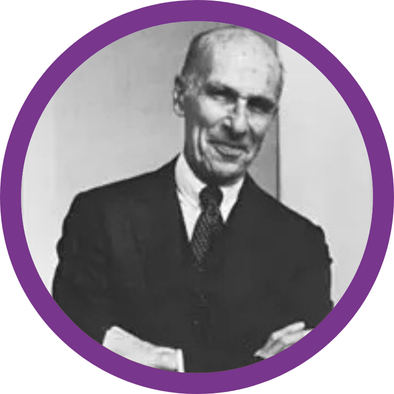
“If you’d told me when we started that we would influence healthcare in leading countries in such a way, it would have been beyond what I’d ever imagined.”
Harvey Picker
Harvey Picker’s commitment to patient centred care
Picker’s commitment to person centred care started with the personal experiences of our founders, Harvey and Jean Picker. In 1986, Jean was undergoing treatment for a long-term condition. Whilst the USA’s healthcare system was technologically and scientifically advanced, they did not find it to be sensitive to the individual needs and preferences of its patients. This needed to change.
In 1987, Harvey and the Commonwealth Fund of New York, funded a research project known as the Picker/Commonwealth Programme for Patient Centred Care. The result of this work was published in “Through the Patient’s Eyes” book in 1993, leading to the establishment of Picker US in 1994.
Harvey and Jean founded the Picker Institute, a non-profit organisation dedicated to developing and promoting a person centred approach to healthcare.
Over 25 years of innovation
From partnering with world-leading pharmaceutical organisations and healthcare providers to working with governments, universities and charities, Picker’s work continues to follow Harvey and Jean Picker’s legacy by putting people at the heart of care. “Person centred” means recognising the experience of everyone, from patients and service users to staff, friends, and family.
From patient centred to person centred care
Picker’s holistic approach, understanding both staff and patients’ experiences, is reflected in our move to the term “person centred care”. We recognise the value of measuring and improving staff experiences just as we do those of patients – both because of this link to care quality and because of the inherent moral case for supporting people working in care. The NHS Staff Survey (administered by Picker on behalf of NHSEI) annually surveys over 1 million NHS workers, providing robust, comparable data on their experiences across a range of domains. As one of the largest workforce surveys globally, it provides rich evidence for provider organisations and for the National Health Service as a whole.
